#Florida history
Explore tagged Tumblr posts
Text
Sinking of the 1715 Treasure Fleet
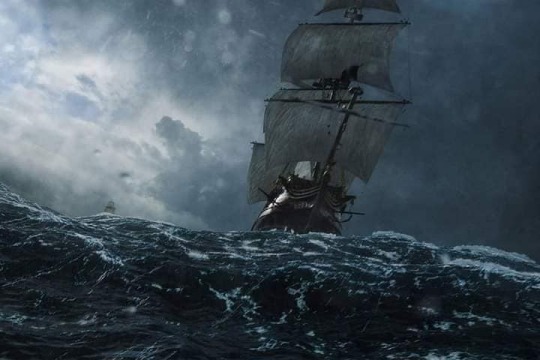
On the 31st of July, 1715, the famous 1715 Spanish Plate Fleet, consisting of twelve treasure galleons, was nearly entirely destroyed by a hurricane off the coast of Spanish La Florida, around 2 a.m. near present day Vero Beach.
The vessels had been carrying over seven million pesos worth of gold and goods from Veracruz when the fleet went down, with two of the ships being lost to open ocean, while the others were crashed into the shallow shoreline up and down the Florida coastline.

(A depiction of the Urca de Lima, one of the vessels of the fleet, wrecked upon Florida shores in the series Black Sails)
The Nuestra Senora de la Carmen was laden with gold bars, doubloons, and silver. An equal amount of wealth was on board the Nuestra Senora del Rosario in 1,000 chests, and the Senora de la Concepcion (also known as Urca de Lima) carried hundreds of chests of coinage as well. The Nuestra Senora de la Regla carried 1,300 chests of nearly three million silver coins, gold coins, chests of uncut emeralds and pearls, and Chinese porcelain.
Over 1,000 sailors would perish from the hurricane, including General Don Juan Esteban de Ubilla, commander of the fleet. In total, eleven vessels went down.
About half of the fleet’s Spanish sailors would survive the incident, and would create a salvage camp upon what is now North Hutchinson Island, and began collecting what treasure they could while waiting for rescue. Aid in the form of food, clothes, and tools came from St. Augustine to the north, sending a relief expedition.
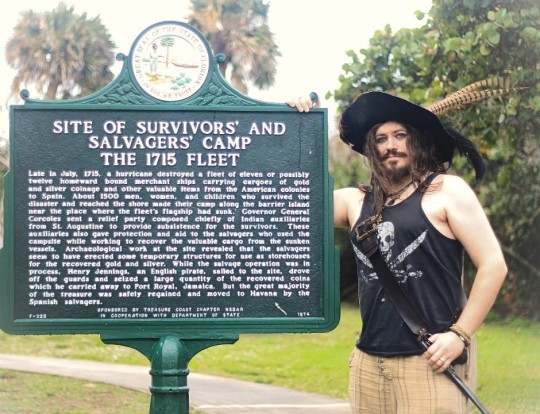
(Myself visiting the site of the 1715 Salvagers' Camp earlier this year)
However, news of what transpired spread fast, and many pirates in the Caribbean and along the American coast flocked to the site for the treasure that was ripe for the taking. First on the scene was English privateer Captain Henry Jennings, along with crewmate Charles Vane in the Bersheba, along with four other vessels.
Jennings had been granted a commission from the governor of Jamaica to “Execute all manner of acts of hostility against pyrates according to the Law of Arms” with instructions to harm no one other than pirates. However, after learning the location of the salvage camp, from a Spanish mail ship, they would ignore their commission's rules and instead lead a ground assault at the still struggling camp - the plunder of which would become Jenning’s call to piratical fame.

(Treasure from the plate fleet. These pieces in particular, amid other artifacts, were discovered by diver Christopher James. Note that while mostly what is pictured are artifacts from the 1715 fleet, the keys and padlocks are from a later date) Today, those visiting the site of the Salvagers' Camp will find the McLarty Treasure Museum, a small maritime museum dedicated to the 1715 fleet. Beyond the museum is a boardwalk through overgrown dunes and out to a lookout post overlooking the coastline with a helm, mast, and a plaque for the fleet.
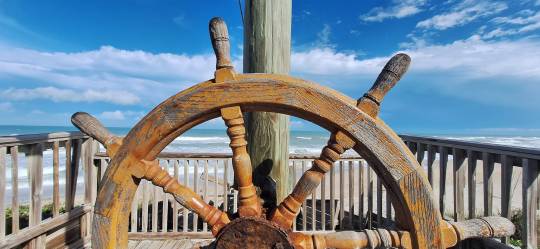
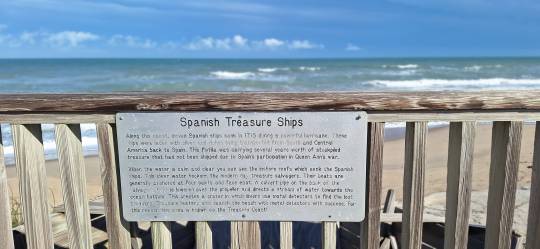
(My photos of the helm and sight at the lookout station) My venture to the site earlier this year was a success, was well-received by those operating it and they may have me return at some point to do an educational program with them.
#pirate history#pirates#history#shipwrecked with captain marrow#1715 fleet#treasure coast#florida#florida history#shipwrecks
34 notes
·
View notes
Text






Key West daytrip, 2/11/25.
#my travels#great tune#key west florida#florida keys#ocean#sea creatures#octopus#cephalopod#sea horse#marine life#florida#florida history#Spotify#coastal#seven mile bridge#bahia honda rail bridge#east coast
10 notes
·
View notes
Text

Marti a flor de labios (Marti on the lips) is a portrait of Cuban poet, writer, journalist, philosopher, and activist José Martí by Cuban artist Edel Alvarez Galban (AGalban). The painting was part of the 2023 exhibition El Arte: Echos of Cuba at the Clearwater Library in Florida. Galban emigrated to the United States in 1995, later moving to St. Petersburg, Florida in 2001 where he works in both the medical profession and the arts.
José Martí was born in Havana on January 28th, 1853 and died in 1895 during the Battle of Dos Rios, fighting for Cuba’s independence from Spain. He traveled to Tampa Bay’s Latin Quarter, Ybor City, on several occasions while in exile to give speeches and to raise funds to support his cause.
Parque Amigos de Jose Marti (Friends of Jose Marti Park) in Ybor City features a statue of Martí and a plaque. The land was gifted to the Republic of Cuba in 1956 and was once home to the boarding house of Afro-Cuban activist Paulina Pedroso. She was friends with Martí and he stayed with her during his visits to the area.
#José Martí#Edel Alvarez Galban#AGalban#Art#Clearwater Art Shows#Clearwater Library#Clearwater Main Library#Cuba#Cuban History#Florida Art Show#Florida Artist#Florida Artists#Florida History#Mixed Media Art#Mixed Media Painting#Painting#Paulina Pedroso#Tampa Bay#Ybor City
7 notes
·
View notes
Text
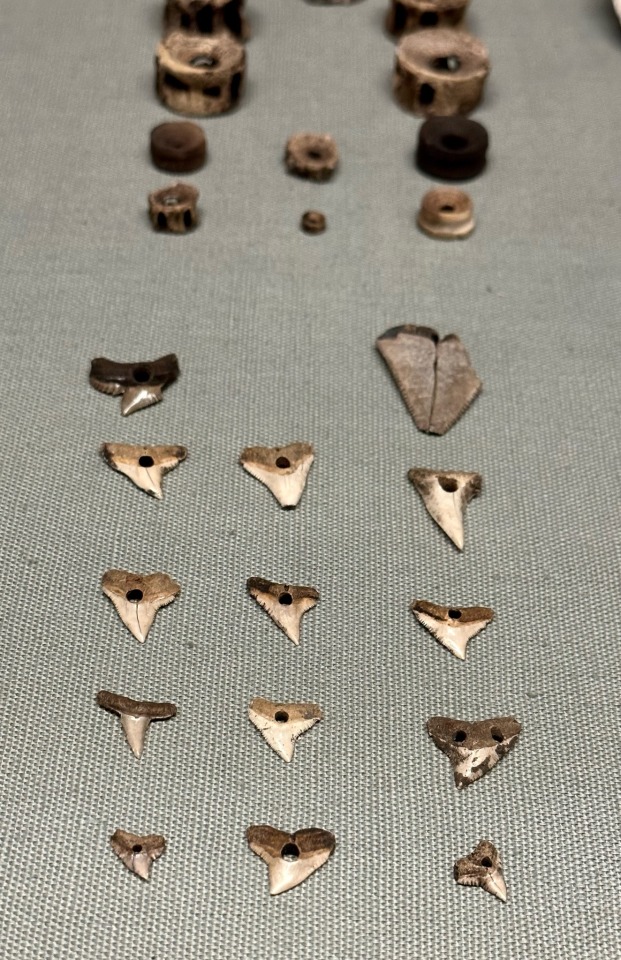
Pierced shark teeth recovered from the Miami Circle Site in Miami, Florida. Now on display at the History Miami Museum, Miami, Florida.
#history miami#miami#florida history#Florida#ancient art#ancestors#indigenous#Miami Circle#archaeology#Florida archaeology#digging miami#paleo Indians#shark teeth#ancient jewelry
19 notes
·
View notes
Text
youtube
Debbie Mucarsel-Powell is running for U.S. Senate in Florida to defeat Rick Scott.
#Debbie Mucarsel-Powell#florida#rick scott#white history#us history#history#am yisrael chai#jumblr#republicans#democrats#Ecuadorian-American#Ecuadorian#Hispanic#Hispanic History#Florida History#donald trump#Youtube#education#abortion ban#abortion#bodily autonomy#reproductive rights#reproductive health#pro choice#reproductive justice#abortion access#abortion rights#voters rights#voter registration#project 2025
2 notes
·
View notes
Text
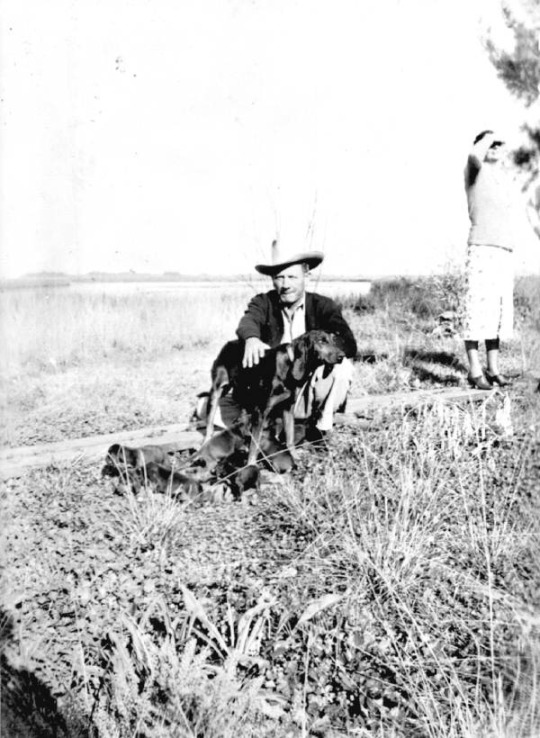
Citrus County sheriff Charles Dean with dog - Garden Island, Florida. 1937 (circa). State Archives of Florida, Florida Memory.
#country life#country living#rustic#southern roots#southern raised#rustic living#rural life#southern life#florida grown#florida cracker#rural florida#old florida#old south#vintage cowboy#cowboy#sheriff#vintage photograph#vintage Florida#florida life#Florida memory#back in time#back in the day#rustic life#country#rural south#southern#Florida history#southern history#citrus county#Florida archives
4 notes
·
View notes
Text
Lena Clarke: The Mail, Murder, and Madness of West Palm Beach
It was a Monday evening, August 1st 1921, and Orlando Police Chief E.S. Vestal had an interesting story presented to him. The woman seated in front of his desk was Lena Clarke and she was insisting someone needed to go to a hotel downtown, specifically to room number eighty-seven, and arrest the thief inside. She identified the criminal as Fred Miltimore, and she promised if they went they would find him there. After making a phone call and verifying who she was, there was no reason for Chief Vestal to not believe her. When he sent the officers out he had no way of knowing what was about to unravel.
By all accounts Lena Marietta Thankful Clarke was a completely normal and highly intelligent child. Born in Vermont in 1886 to a well-known theologian, she, her two sisters, and brother moved around frequently until settling in West Palm Beach, Florida. The family was very successful and Lena, who began reading books on philosophy at the age of six, went on to volunteer her time working with the Red Cross, helping at her local church, and selling war bonds. As they grew older one sister became the West Palm Beach City Librarian, the other opened the first flower shop in Orlando, and her brother had a successful career working for the West Palm Beach post office for eight years until leaving in 1918. 1920 should have been a happy time for the family, but the end of the year marked the turning point in the life of Lena Clarke when her brother unexpectedly died.
After leaving the post office in 1918 due to severe hearing loss, her brother took to becoming an amateur taxidermist and a snake collector, losing his life two years into this new pursuit after being bitten by a coral snake on Christmas morning 1920. The loss would have been shocking to everyone, including his former coworkers at the post office. From 1911 to 1913 Clarke’s brother not only worked there, he was also the postmaster and when his predecessor left the job in 1920 the local businesses began to look to the familiar name of Clarke to fill the roll. Lena had already been working at the post office as an assistant, but a petition was written up for her to be appointed the new postmaster for West Palm Beach and soon thereafter thirty-five-year-old Lena Clarke had the job.
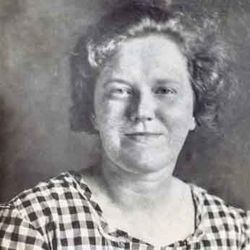
Lena Marietta Thankful Clarke. Image via findagrave.com.
Managing the workings of the post office presented many different tasks and challenges including handling all the mail and postage, war bonds, and money orders, all of which meant there was always a large amount of cash circulating in and out of the building. On July 26th 1921 it seemed it was business as usual when Clarke had two registered mail sacks full of cash sent off to the Atlanta Federal Reserve Bank, but when the sacks arrived in Atlanta and were opened, there was no cash to be found. Instead of the money, between $31,000 and $42,000 depending on varying accounts, the bank found mail order catalogs cut down to the size of dollar bills. Today’s equivalent of almost half a million dollars was missing.
Understandably, Clarke was one of the first people questioned about the disappearance of the money. After all, she was the postmaster of the West Palm Beach post office where the shipment originated from but she insisted she had no idea what had happened to the money. She went home that night and resumed her life until the following week when she hired a driver to take her to Orlando where she checked into room eighty-seven of the San Juan Hotel.
What exactly transpired in the hotel is only known to Lena Clarke and Fred Miltimore, but the version of events that Police Chief Vestal was hearing was as strange as it was simple. Lena checked into the hotel under a fake name and met with Miltimore, a former coworker who once worked as a postal worker with Lena and was now the owner of a restaurant in Orlando. She claimed that she suspected her former coworker of the theft of the money that left her post office on the way to Atlanta the previous week and she confronted him about the crime. This was all interesting but Vestal had one very important question, if he sent officers there how did she know Miltimore would still be in the room and not on the run after their confrontation. Clarke told them she knew he would still be there, because she drugged him with morphine before coming to the police station. When officers arrived at room eighty-seven they did in fact find Miltimore, but he was dead with a bullet to the chest and a gun laying beside him.
When the officers returned to the station Clarke was still there and she was immediately questioned about the dead man in her hotel room. At first she denied that she shot him but she eventually admitted to the killing, claiming that it was Miltimore who stole the money from her post office and that he was going to frame her for the crime so she simply did what she had to do and shot him. Within days Clarke was in jail and charged with first degree murder.
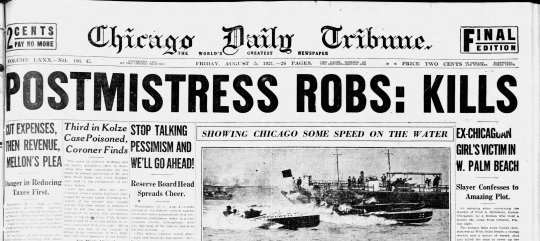
Headline about the murder of Fred Miltimore frpm the Chicago Daily Tribune. Image via newspapers.com
Due to her job and family Lena Clarke was a well-known figure in West Palm Beach but when she was jailed for murder the only thing that soared higher than the shock was her popularity. Her jail cell became more of a sanctuary, and she decorated it herself with some of the many flowers, gifts, and mail she received while in prison. She was even permitted to paint her cell as she pleased and was given a small typewriter to pursue her writing ambitions, eventually taking up poetry and writing her autobiography that she sold through local newspapers for twenty-five cents each. But, for every person sending her flowers there was also a critic and newspapers took to printing cruel commentary on her appearance:
“Lena Mary Thankful Clarke, if you please, is a queer combination —a bundle of contradictions. In personal appearance and dress she is far from attractive. Her figure is heavy and uncorseted and her clothes smack of the backwoods.
Her shoes are generally without heels and her stockings of cotton. Her skin is very fine in texture but covered with large, disfiguring freckles. Miss Clarke’s only assets in appearance are her hair, which is decidedly Titian and naturally wavy, and her eyes, deep blue in color and absolutely straight and unwavering in their gaze.”

Headline about Lena Clarke writing poetry in prison from the New York Times. Image via palmbeachpast.org.
Despite the criticism she seemed to be rather calm and comfortable for an alleged cold-blooded murderer, but that part of her story changed. Lena recanted her confession, now claiming she never told the police that she was involved in the death of Fred Miltimore and that in reality she was so worried about the missing money that she at one point considered taking her own life. The stress of the situation was so bad that she said she could not remember exactly what transpired between the two the night of the murder. And what of that missing money? That story also changed multiple times. After her initial confession Lena later told Chief Vestal that in 1918 while she was working as an assistant to the postmaster there was a shortage of $38,000. She claimed she had always suspected Miltimore and feared he would somehow blame her for the theft in order to ruin her chance at one day becoming the new postmaster. She then told Chief Vestal that this recent theft of money was her fault, that it was done to cover the lingering debt from the 1918 money that she suspected Miltimore of taking. Somehow, this very convoluted story led up to her being in a hotel room with Miltimore, confronting him about the initial crime and begging him to sign a statement that he was in fact responsible for the 1918 theft which he refused to do before ending up dead. In another version of events given later while she was behind bars, Lena reportedly stated that this recent theft was a standalone crime and that yes money was stolen in 1918 but a man named Joseph Elwell loaned her enough money to cover up the loss. There were some major problems with this story, one being that Elwell could not be questioned because he had been shot and killed in New York City in 1920. Another issue is that the missing money that was replaced in the mail sacks with cut up catalogs a week before the Miltimore murder was traced directly back to Lena and her bank accounts.
The story of a man named Joseph Elwell helping Lena at some point was interesting to the police, not because of Elwell personally, but because it supported a theory of theirs. During the investigation multiple people tried desperately to find “who else” was involved in the crime for a simple reason, they could not believe that Lena had forged this plan and committed murder on her own because they felt very strongly that this could not have been carried out by a woman. Multiple leads were followed trying to rope a male accomplice into Miltimore’s murder but eventually they had to admit there was no evidence. Whatever transpired in room eighty-seven of the San Juan Hotel was committed by Lena and Lena alone.

Newspaper article showing Lena Clarke and Fred Miltimore. Image via newspapers.com.
The trial of Lena Clarke was bound to be unusual, but what unfolded in the courtroom was outright baffling. Lena’s family came together and hired multiple law firms for their daughter and their defense of insanity was hard to argue with once Lena herself spoke. As she took the stand she placed an item down in front of her, a crystal ball, and she began to tell her bizarre story. In this lifetime, yes, she was Lena Clarke but this was not her first time here, according to her this was her thirteenth life here on Earth.
Those seated in the courtroom listened as Lena gazed into her crystal ball and described in detail her twelve previous lives including when she was the goddess Isis in ancient Egypt, the lifetime that ended when she was eaten by lions, the time where she was friends with Shakespeare and inspired the character of Ophelia, and of course her first life where she was present in the Garden of Eden alongside Adam and Eve when the universe was created. This may have been her thirteenth life, but she also knew it was going to be an eventful one. She already knew she was going to be found not guilty because next for her was serving as the Vice President of the United States before becoming President after the death of the head of the Socialist party President Eugene V. Debs. The subject of Lena’s sanity was part of many conversations about the crime and many, including Miltimore’s daughter, expressed the belief that Lena was “subject to hereditary insanity.”
In order to clear out the thick speculation, three psychiatrists were brought into the case to professionally evaluate Lena’s sanity. They were split on their decisions. Two believed she truly was insane, the third believed that she did know right from wrong when she chose to end Miltimore’s life. It only took the jury three hours to decide. On December 3rd 1921 Lena Clarke was found not guilty of first degree murder by reason of insanity and was to be committed to the Florida State Mental Hospital at Chattahoochee. Upon hearing her fate Lena was distraught, stating “I would rather be hung and buried here than go to Chattahoochee.”
Lena entered the Florida State Mental Hospital, but she did not have to mourn her fate for long, in less than two years she was released and she moved back home to West Palm Beach with her sister Maude and their mother. The remainder of Lena’s life passed by quietly. She did work for her church and the Red Cross with her name appearing in various newspaper articles about relief efforts in the 1940s and 1950s and she continued writing poetry and various works on church history. Her name, once emblazoned on newsprint next to words like “murder” and “insanity” remained largely out of the spotlight. She kept to herself, taught Sunday School, and continued to live with family members before passing away in 1967 at the age of eighty-one years old.
Today Lena Clarke lays at rest next to her sister in the Woodlawn Cemetery of West Palm Beach, Florida.
*****************************************************
Sources:
Bisbee daily review. [volume] (Bisbee, Ariz.), 14 Aug. 1921. Chronicling America: Historic American Newspapers. Lib. of Congress. <https://chroniclingamerica.loc.gov/lccn/sn84024827/1921-08-14/ed-1/seq-7/>
Kleinberg, Eliot. “Florida History: The Story of West Palm Beach’s Murderous Postmistress.” The Palm Beach Post, Palm Beach Post, 9 Jan. 2022, www.palmbeachpost.com/story/news/2022/01/09/lena-clarke-mysterious-murderous-postmistress-west-palm-beach/9084494002/.
Morrow, Jason Lucky. The Murdering Postal Woman, Lena Clarke, 1921, Historical Crime Detective, www.historicalcrimedetective.com/the-murdering-postal-woman-lena-clarke-1921/.
Pedersen, Ginger. “Going Postal, 1920s Style - The Strnage Case of Lena Clarke.” Going Postal, 1920s Style – The Strange Case of Lena Clarke, Palm Beach Past, 30 July 2021, palmbeachpast.org/2021/07/going-postal-1920s-style-the-strange-case-of-lena-clarke/.
Schiefer, Christine, and Em Schulz. A Haunted Road Atlas: Sinister Stops, Dangerous Destinations, and True Crime Tales. Andrews McMeel Publishing, 2023.
The Washington times. [volume] (Washington [D.C.]), 08 Aug. 1921. Chronicling America: Historic American Newspapers. Lib. of Congress. <https://chroniclingamerica.loc.gov/lccn/sn84026749/1921-08-08/ed-1/seq-3/>
#husheduphistory#featuredarticles#history#forgottenhistory#strangehistory#truth is stranger than fiction#tragictale#florida history#truecrime#famouscrime#weirdstory#weird history#famoustrial#history class#tragic history
3 notes
·
View notes
Text

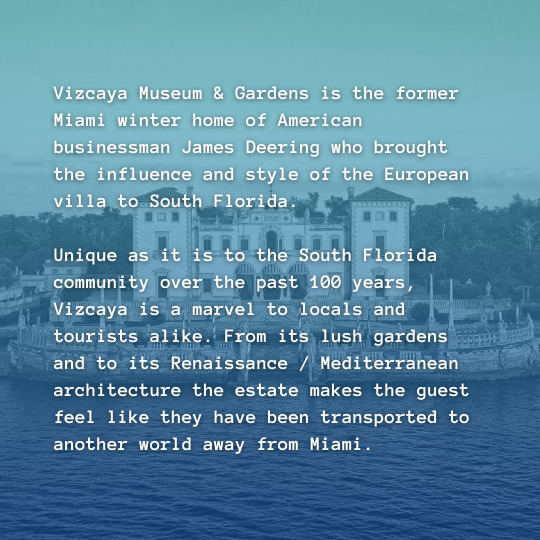



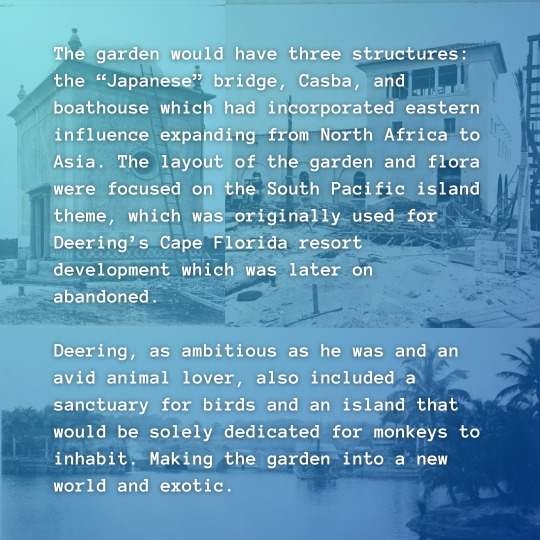

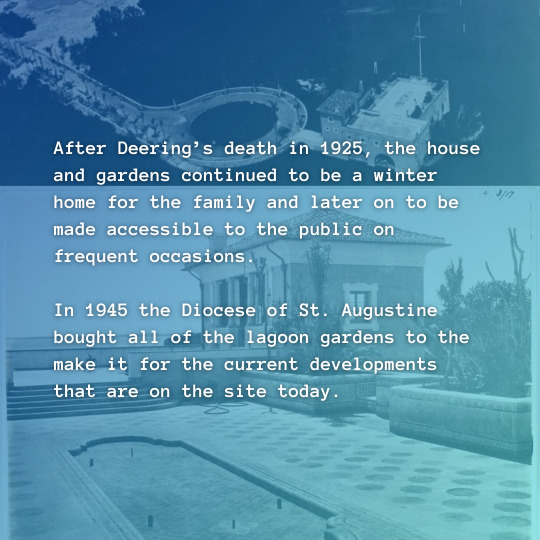
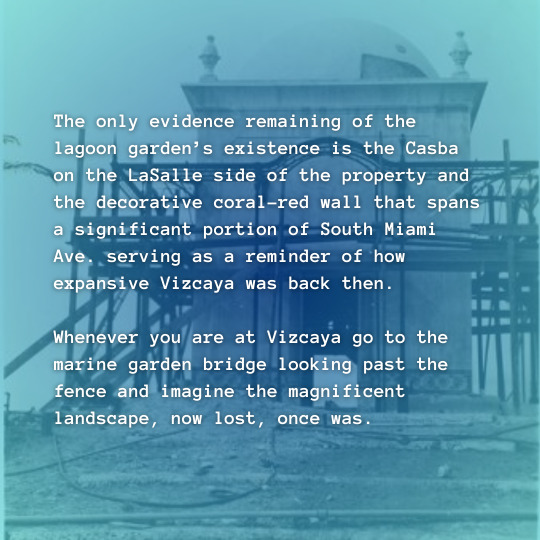

Welcome to Vizcaya’s Lost Lagoon.
*Photos courtesy of Vizcaya Museum & Gardens Archives
#vizcaya#vizcaya museum#lagoon garden#coconut grove#miami#miami dade county#florida#architecture#landscape#lost spaces#miami history#south florida history#florida history#american history#history matters
4 notes
·
View notes
Text
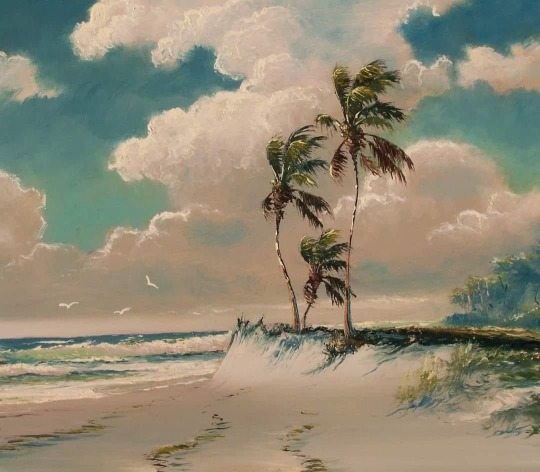
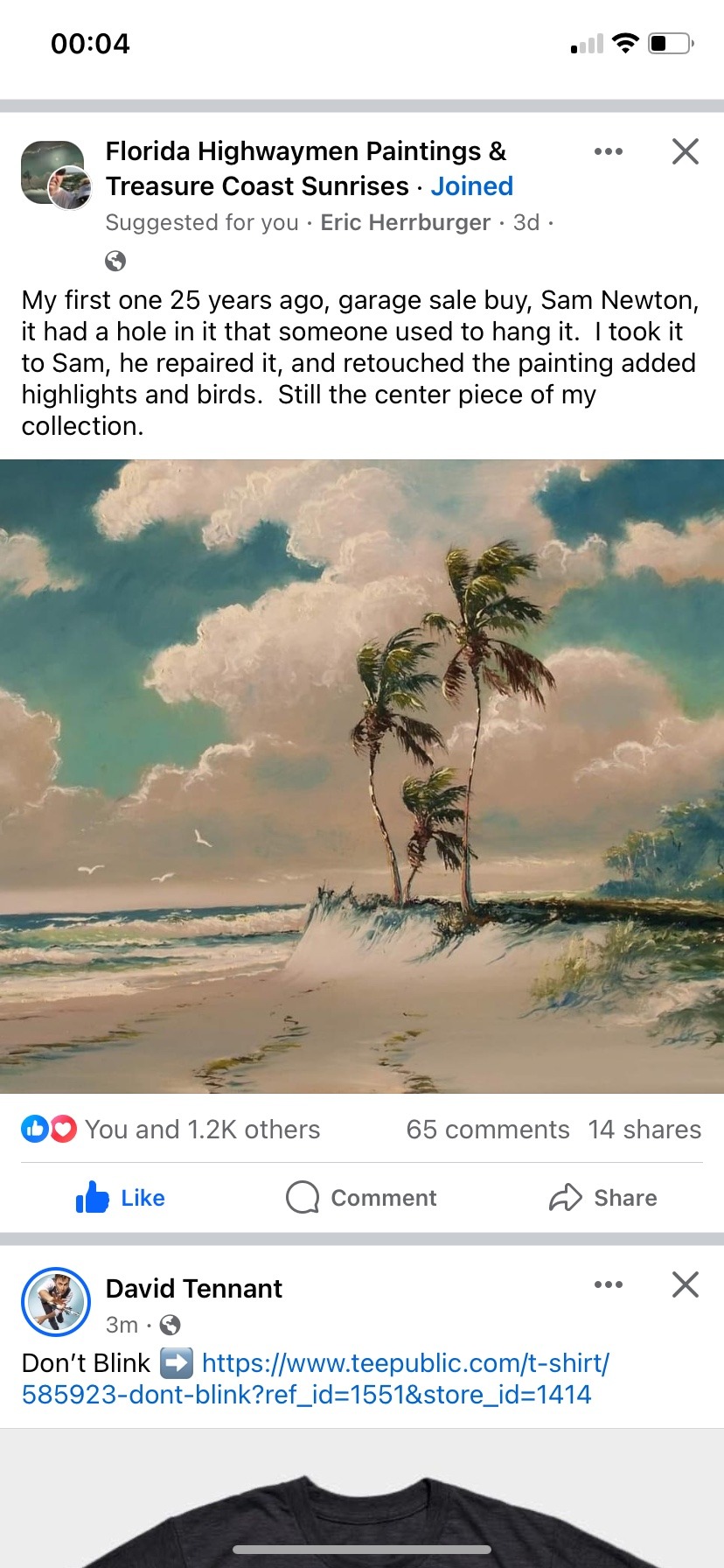
4 notes
·
View notes
Text

On the 31st of July, 1715, the famous 1715 Spanish Plate Fleet which consisted of eleven or twelve treasure galleons was entirely destroyed by a hurricane off the coast of Spanish La Florida, around 2 a.m. near present day Vero Beach.
The vessels had been carrying over seven million pesos worth of gold and goods from Veracruz when the fleet went down, with two of the ships being lost to open ocean, while the others were crashed into the shallow shoreline up and down the Florida coastline.
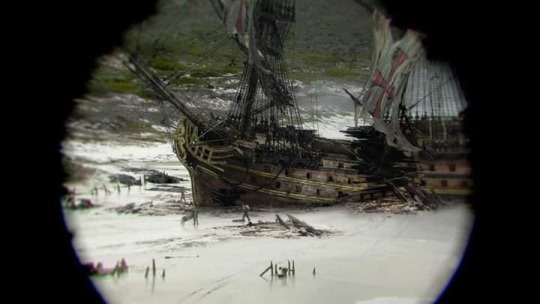
The Nuestra Senora de la Carmen was laden with gold bars, doubloons, and silver. An equal amount of wealth was on board the Nuestra Senora del Rosario in 1,000 chests, and the Senora de la Concepcion (also known as Urca de Lima) carried hundreds of chests of coinage as well. The Nuestra Senora de la Regla carried 1,300 chests of nearly three million silver coins, gold coins, chests of uncut emeralds and pearls, and Chinese porcelain.
Over 1,000 sailors would perish from the hurricane, including General Don Juan Esteban de Ubilla, commander of the fleet.
About half of the fleet’s Spanish sailors would survive the incident, and would create a salvage camp upon what is now North Hutchinson Island, and began collecting what treasure they could while waiting for rescue. Aid in the form of food, clothes, and tools came from St. Augustine to the north, sending a relief expedition.
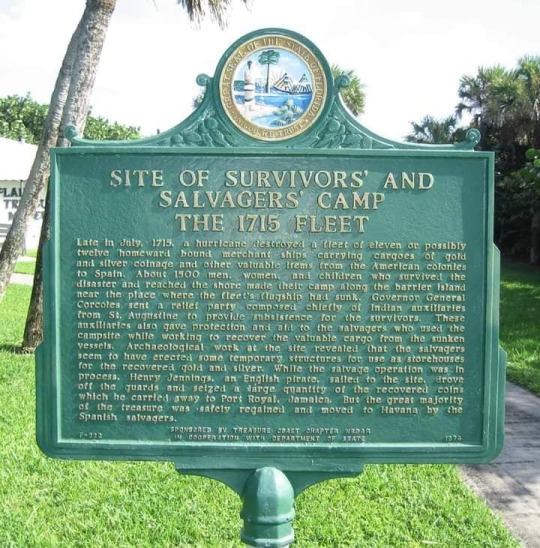
However, news of what transpired spread fast, and many pirates in the Caribbean and along the American coast flocked to the site for the treasure that was ripe for the taking. First on the scene was English privateer Captain Henry Jennings, along with crewmate Charles Vane, in the Bersheba, along with four other vessels.
Jennings had been granted a commission from the governor of Jamaica to “Execute all manner of acts of hostility against pyrates according to the Law of Arms” with instructions to harm no one other than pirates. However, after learning the location of the salvage camp, from a Spanish mail ship, they would ignore their commission's rules and instead lead a ground assault at the still struggling camp - the plunder of which would become Jenning’s call to piratical fame.
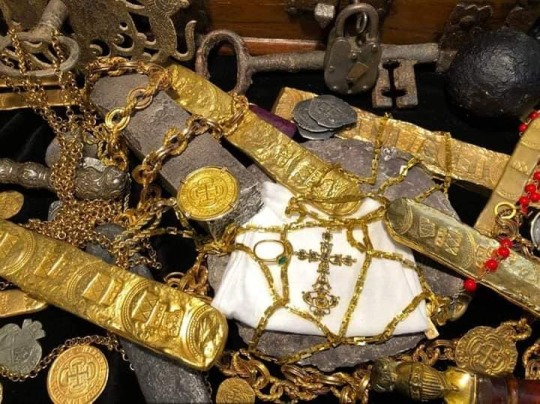
(Pictured are multiple 1715 ships caught in a terrible storm at sea [from Black Sails], a 1715 Spanish treasure galleon wrecked onto a Florida beach [from Black Sails], treasure from the plate fleet [these pieces in particular, amid other artifacts, were discovered by diver Christopher James], and the historical marker of the salvage camp in Florida)
#pirate#history#sea#ocean#1715 fleet#treasure#spanish treasure#florida#florida history#pirate history
51 notes
·
View notes
Text
Union Army Capture of the Confederate Steamer, Gov. Milton
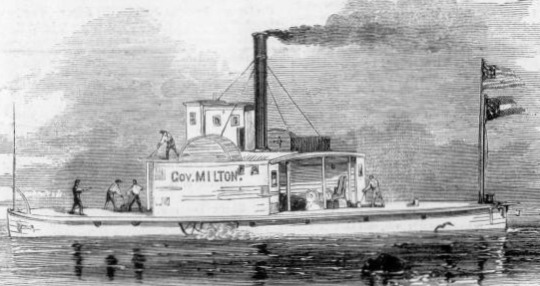
According to historian Lewis Schmidt, the small force of the Saint Johns Bluff expedition steamed upriver roughly 100 to 200 miles “to Lake Beresford, where they then assisted in capturing the [68-ton] steamer Governor Milton,” which had been renamed in honor of Florida’s governor after having been “formerly known as the George M. Bird [under its previous owners] a New England family named ‘Swift’, who were timber cutters and used it as a tug boat to tow rafts loaded with live oak to the lumber market.”
Corporal Nichols of E Company went on to describe the capture as follows:
“At 9 PM … October 7, discovered the steamer Gov. Milton in a small creek, 2 miles above Hawkinsville; boarded her in a small boat, and found that she had been run in there but a short time before, as her fires were not yet out. Her engineer and mate, then in charge, were asleep on board at the time of her capture. They informed us that owing to the weakness of the steamer’s boiler we found her where we did. We returned our prize the next day....”
#pennsylvania#american history#american civil war#civil war#pennsylvania history#america#ap us history#union army#florida#florida history#1862#digital humanities#digital archives#ships#steamship
4 notes
·
View notes
Text

Mary Ann Carroll (1940-2019), “Untitled (Backcountry Twilight)”, n.d., Oil on Masonite board
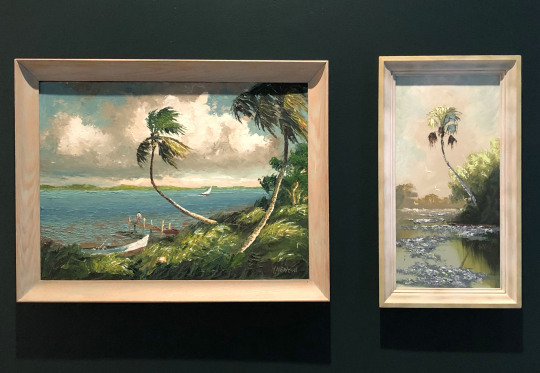
Harold Newton (1934-1991), “Untitled (Painting of the Indian River)”, c. 1958, Oil on Upson board; Alfred Hair (1941-1970), “Untitled (Marshland with palm), c. 1958, Oil on Upson board

James Gibson (1938-2017) “Untitled (Moonlit palms)”, n.d., Oil on Upson board
In early 2021, Tampa Museum of Art presented the work of Florida’s famous Highwaymen painters in the exhibition Living Color: The Art of the Highwaymen.
From the museum-
The Highwaymen are a group of African American artists celebrated for their distinctive paintings of Florida’s natural environment. Working in and around the Fort Pierce area beginning in the 1950s, these self-taught artists depicted the state’s scenic coastline and wild backcountry, often in dazzling combinations of color and tone. Brilliant tropical sunsets, windblown palms, towering sunlit clouds, and blooming poinciana trees are among the many subjects that have become iconic images of Florida in part because of the paintings that the Highwaymen created. In the state’s postwar boom years their paintings found an enthusiastic audience among a growing population of new residents and visitors. Unrecognized by the region’s art establishment of galleries and museums, the Highwaymen by necessity catered directly to their patrons, selling their paintings door-to-door along such thoroughfares as Route 1. It was from this practice that the name “Highwaymen” was later coined.
The popularity of Highwaymen paintings waned in the 1980s as the vision of Florida was reimagined by an ever-increasing population and once-pristine landscapes were lost to development. Then in the mid-1990s a new generation of collectors, with fresh eyes, rediscovered the paintings and began to assemble significant collections. These collectors saw the art of the Highwaymen as an important artistic legacy and together with several writers, scholars, and enthusiasts began the process of establishing the historical context and reevaluation of their work. Books and articles followed, bringing a new level of recognition for the achievements of these artists and, with that, growing popular acclaim. The contribution of the Highwaymen to the cultural life of Florida was formally recognized in 2004 when the group of 26 artists was inducted into the Florida Artists Hall of Fame.
Living Color: The Art of the Highwaymen brings together 60 paintings by a core group of the Highwaymen including Al Black, Mary Ann Carroll, Willie Daniels, Johnny Daniels, James Gibson, Alfred Hair, Roy McLendon, Harold Newton, Sam Newton, Willie Reagan, and Livingston Roberts.
Focusing on work produced from the 1950s to the 1980s, the exhibition is an in-depth examination of the group’s initial period of success when their groundbreaking style of fast painting was being developed. Fast painting is a hallmark and essential innovation of the Highwaymen. Facing limitations imposed by the racial prejudice of their time, they had little or no access to formal training or to conventional art markets. To overcome these obstacles, they produced large numbers of works which could be sold at very affordable prices. Some estimates of the group’s overall production during their heyday exceed 200,000 paintings, with certain artists creating dozens of paintings per day. Their creative response to the racism they confronted resulted in an original artistic practice.
Opening at The Woodson African American Museum of Florida in St. Pete this Saturday, 9/9/23, is Florida Highwaymen: The Next Generation – The Legacy Continues, an exhibition of work by Ray McLendon, son of Highwayman Roy McLendon, who creates Florida landscapes in the same iconic style his father used.
#Tampa Museum of Art#Alfred Hair#Art#Art Show#Carter G. Woodson Museum#FBF#Florida Art#Florida Art Shows#Florida Artists#Florida History#Harold Newton#Highwaymen#Painting#Ray McLendon#Roy McLendon#St. Pete Art Shows#Tampa Art Shows#The Woodson African American Museum of Florida#Woodson Museum#Florida Highwaymen
64 notes
·
View notes
Text

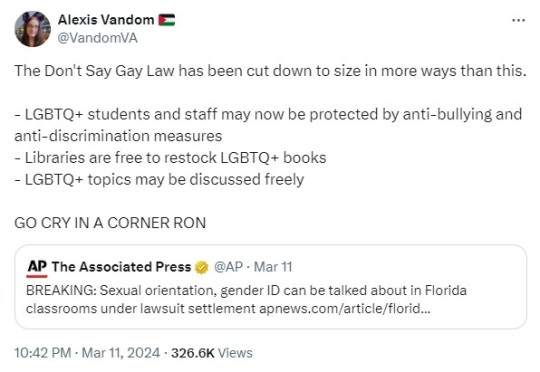
"The Don't Say Gay Law has been cut down to size in more ways than this.
- LGBTQ+ students and staff may now be protected by anti-bullying and anti-discrimination measures
- Libraries are free to restock LGBTQ+ books
- LGBTQ+ topics may be discussed freely
GO CRY IN A CORNER RON
Florida teachers can discuss sexual orientation and gender ID under ‘Don’t Say Gay’ bill settlement
#lgbt#lgbtq#don't say gay#ron desantis#fuck you desantis#florida#lgbt awareness#lgbt discrimination#lgbt history#lgbtqia+
62K notes
·
View notes
Text
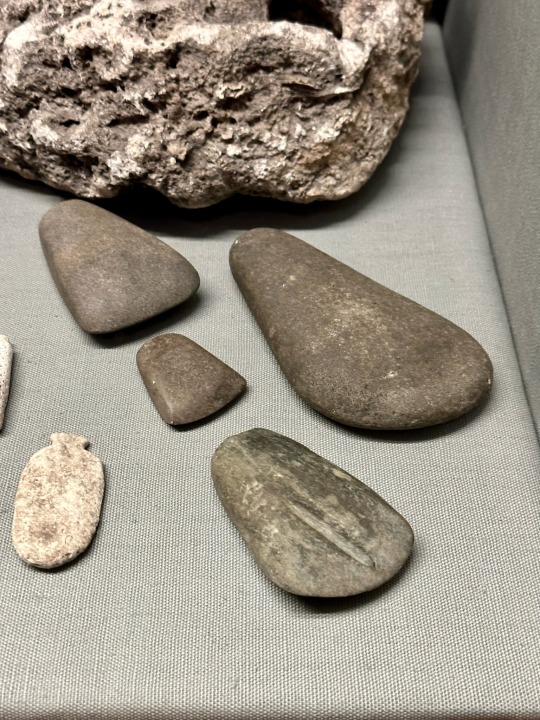
Artifacts recovered from the Miami Circle site now on display at the History Miami Museum in Miami, Florida.
#history miami#Miami Circle#paleoart#ancestors#indigenous#florida#florida history#lithics#archaeology#Floridaarchaeology#digging Miami#Paleo Indians#stone axe
11 notes
·
View notes
Text
The Surrency Tragedy: A Glimpse into Jacksonville's Darkest Hour
In the quiet town of Jacksonville, Florida, the unsettling murders of John and Mayme Surrency in the early 20th century not only shocked residents but also marked a significant moment in legal history. The Murders John and Mayme Surrency were a couple deeply integrated into their community. Their brutal murders under mysterious circumstances left many unanswered questions, with theories ranging…
#capital punishment reform#early 20th-century crime#Florida history#historical crimes#Jacksonville history#Justice system#legal challenges#Legal History#murder mystery#societal impact
0 notes
Text

Florida Pride Typography Art
#Florida map#Florida state#Florida typography#Florida word cloud#Florida landmarks#Florida gifts#Florida pride#Florida LGBTQ#Florida rainbow#Florida equality#Florida decor#Florida travel#Southeastern USA map#Florida illustration#Florida history#lgbtq#lgbtqia#lgbt pride#lgb alliance#lgbtq community#queer pride#queer#trans pride#gay pride#pride#lgbt
0 notes